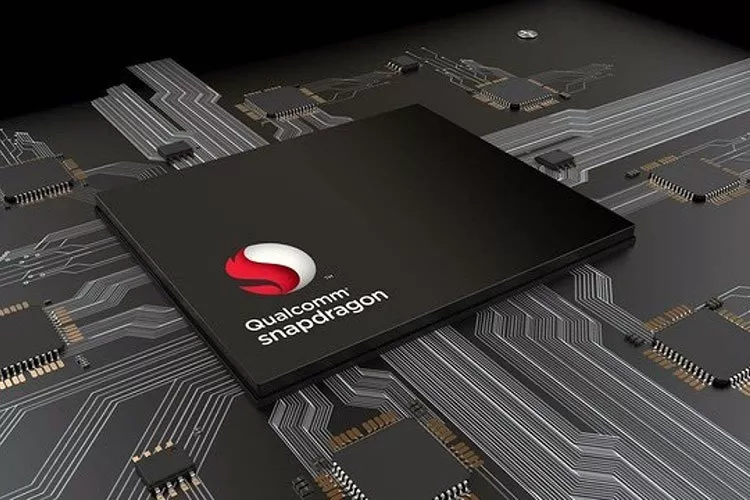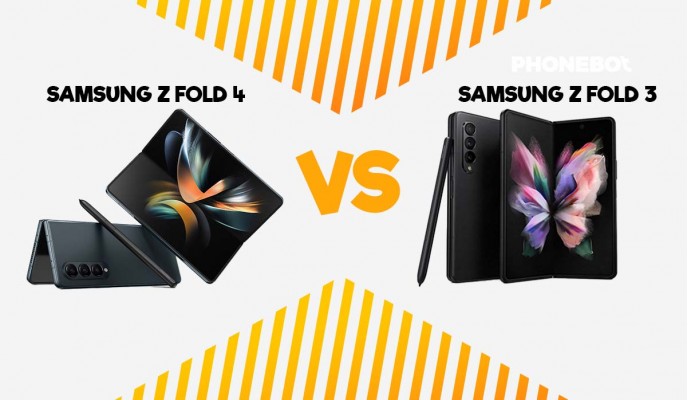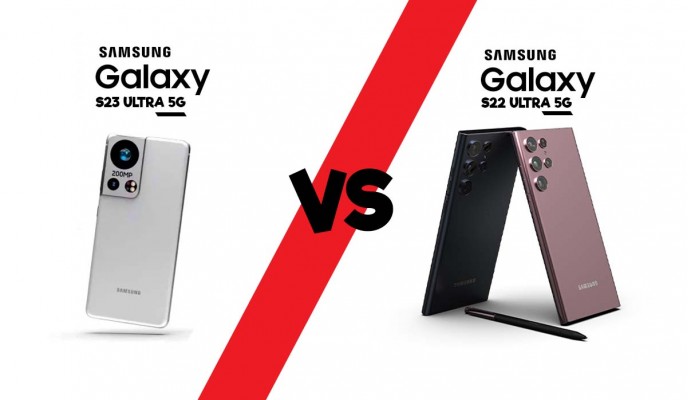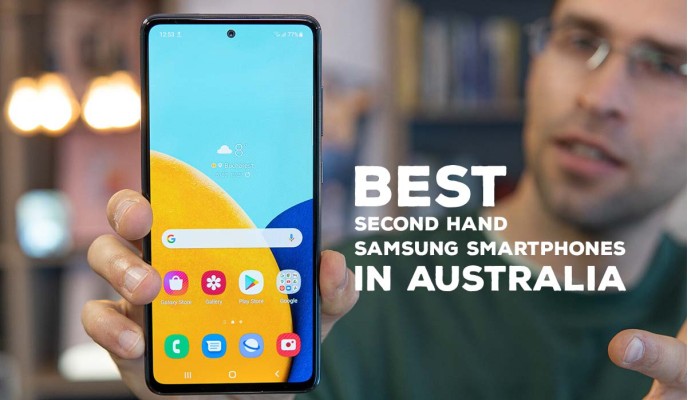Battle Of The Chipsets - Samsung Exynos vs. Qualcomm Snapdragon

Qualcomm Snapdragon VS Samsung Exynos: Background
To understand the argument for Exynos Vs. Snapdragon on Samsung phones, a background of the facts surrounding why these two exits are only fair. There have been performance differences between the two and the Qualcomm Snapdragon variant performed marginally (15%) better than the Exynos. Since the Samsung Galaxy S2, Samsung has always released its flagship device in two variants. If you’re just discovering this now, Exynos is Samsung proprietary chip made in-house by its engineers and has always been used on their phones in different markets. Mostly this happens in Asia and Europe. Snapdragon chips, on the other side, are made by Qualcomm, which is a powerhouse in the global chips business. Samsung has almost always used the two chips independently. You might be confused and wondering if you should go for the Snapdragon or the Exynos variant, we'll be discussing the key differences between the two and also discuss the benchmark performance. Let's get right into it.
Qualcomm Snapdragon and Samsung Exynos: Benchmark Performance
We tested both the variants of the Samsung Note 20 and here are the results:
GeekBench 5 | Exynos 990 | Snapdragon 865+ |
Single Core | 954 | 928 |
Multi-Core Score | 2742 | 3337 |
We use the same results with the AnTuTu 8 benchmark:
The Exynos variant was able to lead the score in the single-core test but when it came to multi-core performance, the Snapdragon 865+ performed marginally better.
Exynos 990 | 535811 |
Snapdragon 865+ | 615415 |
The benchmarks clearly show that the SD865 performs better. The Exynos 990 is also a flagship processor and performs like one but it suffers from thermal throttling, it reduces the performance of the chipset when it heats up to protect the internals.
If you need a Samsung Note 20 just to play games or you regularly need it for graphic-intensive tasks then you should go for the Snapdragon 865+ variant. You can also play all the games on the Exynos 990 and it can run every app you throw at it with ease, it's just that the SD865+ runs them a bit better. Games are also optimized better for the Qualcomm chipset as all major phone companies use the Qualcomm chipset. The same is the case for all the previous generation Exynos processors. They perform exceptionally well but the Snapdragon counterpart performs slightly better.
The Exynos variant uses the Mali GPUs while the Qualcomm variant uses Adreno.
If you'd like to read more history between the two chipsets, you can read below.
Differences between Exynos and snapdragon
The difference between Exynos and Snapdragon SoCs is in their construction. If well-executed, it is expected that each of them will be a champion in their own right—however, as we all know, this is not the case. For Samsung, all their Exynos chips are designed and made by them, while Qualcomm outsources their chip fabrication to TSMC (Taiwan Semiconductor Manufacturing Company). It is a partnership that has always come through for the company.
Chip making is a collaborative process, and both Qualcomm and Samsung use ARM’s architecture for their chips, along with in-house modifications. ARM gives their Cortex cores to both companies from which Samsung comes up with their Mongoose version, and Qualcomm modifies and names it Kryo cores. Major differences in execution begin here. By design, the Exynos chip is an octa-core processor, while Snapdragon chips are quad-core chips. But even with the Kryo cores, Qualcomm claims improved performance of up to 23% over the Cortex and Mongoose Cores. For GPU, Qualcomm uses a custom GPU called Adreno, which right of the bat is better than ARMs Mali GPUs, which Samsung has been using on their SoCs. However, for Latest Exynos 2100 processors, Samsung had teased going with AMD for their future Mobile GPUs but opted for the latest ARM Mali-G78 GPU. However, it’s not all gloom for the Samsung chip. By using smaller semiconductors, it has faster RAM and Memory Speeds.
Samsung Exynos vs. Qualcomm Snapdragon: Why Samsung chooses Exynos chips
The reasons for Samsung to use the Exynos chip are mostly business-oriented. Being the most extensive mobile devices maker by volume, it is justified that Samsung seeks to reduce dependency on external chip makers. It a model that Apple has successfully executed, and the benefits are apparent. The reason why most Exynos Phones end up in Europe and Asia and not the USA is that most mobile networks in the USA use CDMA. Up until now, it has been unsupported in previous Exynos processors. Another factor is the fact that snapdragon has integrated LTE and supports 4K video, which the Exynos chips have faltered in the past.
Samsung Galaxy S20 exynos Vs Snapdragon
The comparisons between the performance of Samsung’s proprietary Exynos and Snapdragon have always existed for as long as both chips have existed in the market. However, things started hitting a headwind for Samsung with the release of the Samsung S8. When benchmarks were done between Snapdragon 835 and the Exynos 8895, the more efficient snapdragon construction trumped Samsung’s chip by a wide margin. This was unlike previously, where each of the chips had an area in which they excelled. The same narrative happened with the release of the Galaxy S10. The Exynos chip continues to be inferior to the Snapdragon chip despite the phones costing the same, and clients were not happy.
To understand the customer’s frustration, you have to note the performance gaps in the Snapdragon 865 and Exynos 990 chips used in the Samsung Note 20. Both use a 7nm process and without an internal modem, but the 7nm construction means the chips are faster, power-efficient, and have good thermal properties. However, this is as far as the comparisons go. The execution of both chips is different, which shows in all the benchmarks where these devices were pitted against each other. For CPU-based performance benchmarks, the performance is almost at par, although the Exynos chip has a lot of thermal throttling to increase battery efficiency. For GPU dependent operations, the Snapdragon chip was faster, delivering crisper resolution and high refresh rates. Since most user operations are graphics-based, the Exynos 990 penalized its users more if they had to do anything mildly requiring everything to work at peak.
For this reason, a petition was signed by some Samsung Users in Early 2020 to stop the supply of Exynos based phones. Given that the flagship phones cost around $1400 new, it seemed unjustified to pay the prices for an inferior product. This was the narrative that forced Samsung to supply Snapdragon equipped phones in their home turf of South Korea, where you’d expect them to use a native product.
Samsung S21 Exynos vs Snapdragon
Before the release of the Samsung S21 and S21 plus, Samsung announced the Exynos 2100 chip. It was built in a 5nm fabrication, but this time it has an integrated 5G modem capable of working with Sub-6GHz and mmWave networks. However, despite teasing AMD GPUs, it still has an Arm Mali-G78 GPU. For the Snapdragon variants, they went with the Snapdragon 888 chip. The dreaded comparisons between the performances of both these phones are what Samsung intended to put to bed by going all out on their latest chip.
For Qualcomm, the ethos in the design of their Snapdragon 888 chip was to increase sustained peak performance and not just during benchmarks. Their focus was on high performance without thermal throttling integrating all the best bits of a phone. For the Exynos 2100 variants, Samsung wanted to close the performance gap from previous flagships. Initial impressions of the phone are good. Given the fact that their CPUs are clocked higher and the fact that they have also dropped their Mongoose MD5 in favour of stock Cortex cores.
The early benchmarks are promising and the Exynos chipset seems to be on par with the Snapdragon variant. Both chipsets offer flagship performance and you might not be able to tell the difference in day to day use. If your task and daily activities are graphic intensives then we recommend going for the Snapdragon variant.
Check Out: Samsung Galaxy S23: All the Rumors We Know So Far
 Sale
Sale![Samsung Galaxy S20 5G (128GB) [Like New] Samsung Galaxy S20 5G (128GB) [Like New]](https://www.phonebot.com.au/image/cache/catalog/refurbished/samsung/galaxy-s20/s20 CW-200x170.JPG)
![Samsung Galaxy S20 Plus 5G (128GB) [Like New] Samsung Galaxy S20 Plus 5G (128GB) [Like New]](https://www.phonebot.com.au/image/cache/catalog/refurbished/samsung/Galaxy-s20-plus/samsung-galaxy-s20-plus-black-200x170.jpg)
![Samsung Galaxy S21 5G (128GB) [Grade B] Samsung Galaxy S21 5G (128GB) [Grade B]](https://www.phonebot.com.au/image/cache/catalog/refurbished/samsung/galaxy-s21/samsung-galaxy-s21-5g-phantom-grey-200x170.jpg)
![Samsung Galaxy S21 FE 5G (128GB) [Grade A] Samsung Galaxy S21 FE 5G (128GB) [Grade A]](https://www.phonebot.com.au/image/cache/catalog/refurbished/samsung/galaxy-s21-fe/s21-fe-olive-200x170.jpg)
![Samsung Galaxy S20 Ultra 5G (128GB) [Grade A] Samsung Galaxy S20 Ultra 5G (128GB) [Grade A]](https://www.phonebot.com.au/image/cache/catalog/refurbished/samsung/galaxy-s20-ultra/samsung-galaxy-s20-ultra-5g-128gb-grade-a-200x170.jpg)




